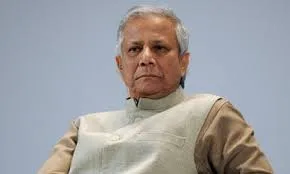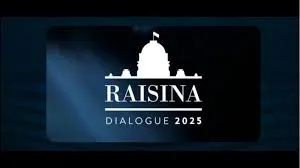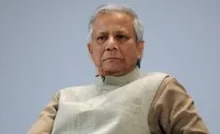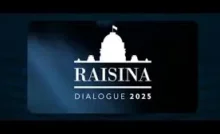Are you trying to be a Social Media Influencer without knowing the meaning of the term ‘INFLUENCER’?
In the age of social media, the term ‘influencer’ has become ubiquitous. Platforms like Instagram, Facebook, and YouTube are teeming with individuals who amass large followings, often by sharing content that ranges from fashion and lifestyle tips to comedic skits, dance challenges, and many more. While some argue that these influencers offer nothing substantial—baseless reels with no motivation, enlightenment, or educational value—it’s crucial to understand the varied traditions of influence and recognize the difference between social media influencers and real-world influencers who drive tangible change.
Social media influencers are individuals who have built a substantial following on various social media platforms. They leverage their reach to promote products, lifestyles, and ideas, often in exchange for financial compensation or free products.
However, when observed in-depth, the content produced by a large number of influencers lacks depth and fails to provide any meaningful value. Our eyes fall on the prevalence of superficial content, such as fashion hauls, beauty tutorials, and viral dance challenges, which often prioritize entertainment over substance. Many tend to waste time following these so-called influencers whose content offers nothing constructive, only unhealthy, unrealistic views of their lives.
Is it correct to term them as influencers? Are we not somehow getting lost in the reels with no values and sense in the name of entertainment? For example, a few influencers have nothing constructive to post, but only unhealthy, unrealistic views of their lives, which can in no way influence positively. Social media influencers who dance in the streets, metro trains, railway platforms, or inside the trains, disrupting the peace of passengers, cannot be rightly termed as influencers. So why are these accepted by us?
Contrastingly, real-world influencers are individuals who inspire and drive change through substantial contributions in various fields. These influencers often possess expertise, credibility, and a genuine commitment to their causes. There are fitness influencers, motivational speakers, health workers, educationists, comedians, and many from different areas who inspire people to lead healthier lives through their fitness routines and motivational posts. Not everything can be humorous and not everyone can be a comedian.
Even comedy must have substance. For example, Kusha Kapila, a comedian and actor is known for her humorous takes on societal norms and stereotypes. Her content often carries underlying social messages that provoke thought and encourage change. Real influencers impact conservation, science education, and public health, respectively, making significant strides in their areas of influence.
For instance, Jane Goodall’s groundbreaking work with chimpanzees and her continued efforts in conservation have garnered global respect and policy changes. Neil deGrasse Tyson’s ability to popularize science through his books, lectures, and media appearances has inspired countless individuals to pursue scientific careers. Michelle Obama’s initiatives on health and education have had a lasting impact on communities across the United States and beyond. India also has a roster of social media influencers who use their platforms for good, spreading awareness, education, and positive change. However, the majority with no sense content has dented the term ‘influencers.
The debate over whether social media influencers are ‘real’ influencers often hinges on the perceived value of their content. It’s important to recognize that influence is not monolithic. While some social media influencers may indeed produce content that seems superficial, others use their platforms to advocate for social issues, share educational content, and inspire positive change. Real influencers blend entertainment with education and advocacy, demonstrating that social media influence can indeed be substantial and impactful.
The line between social media influencers and real-world influencers is increasingly blurred as more and more individuals use their online platforms for meaningless engagement while meaningful content or posts get shadowed. The key lies in discernment—both from the audience and the influencers themselves. Followers should seek out and support influencers who offer valuable content, while influencers have the opportunity to leverage their reach for the greater good.
Moreover, brands and organizations can play a crucial role by partnering with influencers who align with their values and missions, ensuring that marketing efforts also contribute to societal well-being.
While it’s easy to dismiss social media influencers as purveyors of trivial content, it’s essential to acknowledge the diversity within this group. Some influencers indeed offer little more than fleeting entertainment, but others use their platforms to educate, inspire, and advocate for significant causes. As the digital world continues to evolve, the definition of influence will undoubtedly expand, encompassing both traditional real-world impact and the unique potential of social media to drive change.
However, it’s also critical to address the darker side of social media influence. The overhyped term ‘influencer’ has all the possibilities to misguide many young minds, diverting them from real-life goals while embracing the reels of life. Is there any scrutiny of posts before they are made public on social media platforms? Two young school children, barely teens, influencing through their discourteous videos raises serious concerns. How far can such posts influence people positively? Are we not allowing the innocence of children to die prematurely? Many influencers are seen to promote false information. Do we understand the potential negative outcomes? Dancing in the streets, metro trains, railway platforms, or inside the trains, thus disrupting the peace of the passengers, can hardly be considered influential or beneficial. Why, then, do we accept such behaviour?
In the end, whether an influencer is “real” or not depends on the substance and impact of their influence, not merely the medium through which they operate. Social media influencers should hold immense power to spread the right information and transform a person or society positively. The audience’s responsibility is to differentiate between shallow content and genuinely impactful messages, supporting those who strive to make a meaningful difference.
Mousumi K Sachdeva is the CEO of Griffin Publication, an author, public speaker, Television Spokesperson and Skill Trainer










